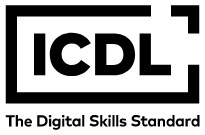A Cutting-Edge Bio-Inspired Computational Framework for Advanced Virtual Reality Classification through Sophisticated Predictive Methodologies
Abstract
Virtual reality (VR) enables the simulation of a wide variety of complex environments, from tiny biological structures to entirely imaginary worlds. These simulations create new possibilities for learning, training, and interaction that go beyond the limits of the physical world. However, virtual reality (VR) realizes this imaginary world, so it is not just a dream. VR works through the invocation of many of the senses. It creates realistic simulations through the creation of immersive settings that combine the real and the imagined, thereby affording special hands-on learning possibilities in a variety of subjects. This study investigates the effectiveness of combining Histogram Gradient Boosting Classification (HGBC) with Decision Tree Classification (DTC), the Ebola Optimization Search (EOS), and the Differential Squirrel Search Algorithm (DSSA) to predict VR outcomes. By integrating these advanced predictive and optimization techniques, the approach aims to enhance accuracy. Research will be conducted to ascertain the possible uses of VR, enhance user experience, and assess the impact on industries related to training, education, healthcare, and entertainment. In the evaluation phase, HGDS attained the highest accuracy of 0.967 in the test phase, making it the top-performing hybrid model, while DTEO showed the lowest accuracy of 0.907, identifying it as the weakest model.
Full Text:
PDFDOI: https://doi.org/10.31449/inf.v49i16.9315

This work is licensed under a Creative Commons Attribution 3.0 License.









